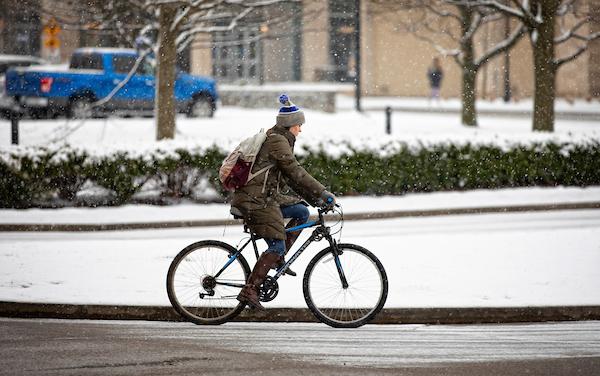Whether it’s typical rainy spring weather or blustery winter, you’ll see people riding bicycles to, from, and around campus all year long.
All weather commuting is a challenge (and certainly not for everyone), but it’s also a badge of honor for those who brave the elements. Check out these tips and tricks to keep you pedaling—warm and dry—all year long.
First off, be sure to sign up for UK Alert, UK's emergency notification system, for information about closures and delays. Check the local weather before heading out. A trustworthy weather app is a cyclist’s best friend! And remember, you can always leave your bike on campus and return home via an alternative method if the weather or road conditions worsen during the day.

